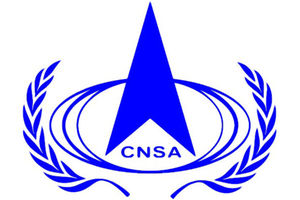I have blogged before about the plans that China has for lunar exploration. China is carrying out a whole series of missions to the Moon scheduled out to 2020. This is by far the most ambitious lunar exploration effort being executed by any major national space program.
Phase I of the Chinese lunar exploration program consisted of two orbital missions. In 2007, China launched the Chang'e 1 which flew to the Moon and scanned the entire lunar surface for a high definition 3-D map to be used for future missions. It also mapped the location and abundance of a variety of chemicals. In 2010, the Chang'e 2 was sent to the Moon to scan the lunar surface in greater detail.
Phase II of the Chinese lunar exploration program was Chang'e 3 which consisted of a lunar rover called the Jade Rabbit that was landed successfully on the Moon to explore about a square mile of the lunar surface. It also carried out a 3 month mission of astronomical and Earth observations. The Chang'e 4 mission was a backup for Chang'e 3 but was used for testing after the success of Chang'e 3.
Phase III of the Chinese lunar exploration program began with Chang'e 5-T1 to test a lunar return landing. It was launched in 2014. In 2017, the Chang'e 5 will be launched to send a lander to the Moon which will collect up to four pounds of samples and return them to Earth. Chang'e 6 will be launched in 2020.
China also has a very ambitious energy development program. They are building dozens of nuclear fission reactors and planning to build dozens more in the next ten years. They are also research fusion power reactors. There is a light isotope of helium which has great potential as a fuel for fusion reactors. Helium-3 is stable isotope of helium which contains two protons and a neutron in the nucleus. There is virtually no helium-3 on Earth. However, after billions of years of bombardment of the lunar surface by the solar winds, the upper layers of dust on the lunar surface are saturated with helium-3. There is estimated to be a million metric tons of helium-3 on the lunar surface down to a depth of a few yards. Forty seven tons of helium-3 which would fit into the cargo bays of two space shuttles could power China for a year if burned in fusion reactors. China would like to establish a permanent manned base on the Moon for mining helium-3. This could provide cheap pollution free power for China which is in desperate need of better energy sources.
In addition to using the Moon for a source of fusion fuel, China could also use the Moon as a military base from which to launch missiles against any target on Earth. When China launched the Jade Rabbit, its first lunar rover in 2013, there were reports of articles in the Chinese press that China could make the Moon into a "death star." China has been increasingly aggressive and belligerent in the last few years and recently published a map of U.S. cities that could be targeted for nuclear strikes by Chinese submarines. The idea of militarizing the Moon goes against major international space treaties including the U.N. Outer Space Treaty and the U.N. Preservation of Space Treaty.
Hopefully, China will concentrate on peaceful uses of space resources and reject the militarization of the Moon in the coming decade.
Chinese National Space Administration Logo:
